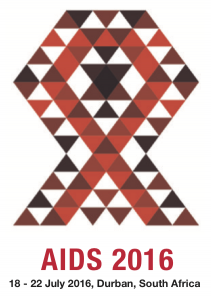Higher rates of eye complications in HIV positive people on ART
1 October 2016. Related: Conference reports, Antiretrovirals, Coinfections and complications, World AIDS 21 Durban 2016.
A prospective South African study in 342 people looked at rates of optical complications and associations with HIV status and time on ART.
This group included: HIV-negative (n=105), HIV positive not on ART (n=16), HIV positive on ART for <12 months (short-term) (n=56) and HIV positive on ART for >36 months (long-term; n=165). All participants received full ophthalmic examination including fundoscopy.
Ocular disease was diagnosed in 218/342 people (64%). with HIV associated with a 3-fold higher rate or any ocular condition on (OR=3.1; 1.7-7.7; p< 0.001) and 2-fold risk of having more eye complaints (OR=1.9; 95% CI: 1.1-3.2, p=0.020), compared to HIV negative participants.
Conditions affecting the external eye, anterior chamber or posterior chamber, but not the neuro-ophthalmic segment, were significantly more common among HIV positive individuals (Table 1).
Within the HIV positive group, after adjusting for age, longer ART use was associated with higher rates of clinical cataract (57% vs. 38%; aOR 2.2, p=0.01) and HIV retinopathy (30% vs. 11%; age-aOR 3.4, p<0.05).
| HIV+ on ART | HIV-neg | OR (95%CI) | p-value | |
|---|---|---|---|---|
| External Eye | 40 (17%) | 7 (7%) | 2.8 (1.6 to 6.6) | 0.015 |
| Anterior Chamber | 79 (33%) | 18 (67%) | 6.5 (0.8 to 5.0) | 0.07 |
| Posterior Chamber | 58 (24%) | 10 (10%) | 3.1 (1.5 to 6.4) | 0.001 |
| Neuro-ophthalmic | 8 (8%) | 25 (11%) | ns |
Reference:
Peters R et al. Ocular conditions are more common among HIV-infected individuals using ART for an extended period of time. AIDS 2016, Durban. Poster abstract WEPE108
http://programme.aids2016.org/Abstract/Abstract/2476 (Abstract)
http://programme.aids2016.org/PAGMaterial/eposters/0_2476.pdf (PDF poster)


